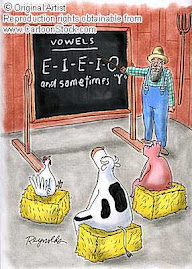PRONUNCIATION AGENDA and REGIMEN
WHY? because you will understand other people more easily and
other people will understand you more easily
WHY? because you will understand other people more easily and
other people will understand you more easily
FACT: There are 26 letters in the alphabet
but 52 SOUNDS in the phonetic alphabet
in American /Canadian
English.
I MUST insist, on the word SOUNDS!
They are physical and are produced by your mouth!!
They are vibrations from your vocal cords for VOICED
and UNVOICED is a production of air!!
REMEMBER THIS very important NOTE!!
HOW to include a daily routine, an exercise
program
- Study
and practice
an individual sound. A new one every day would be an excellent idea
but you can START with one a week and that would be great!!
HOW to learn ENGLISH PRONUNCIATION
-
Do this by watching How-To
videos and imitating what you see and hear. In America it is normal to look someone in the eyes while they
speak, but here it is better to look and watch the mouth.
* Watch the
mouth of the speaker
* Read
English out loud to yourself, really concentrating on these
new sounds.
* Practice in
front of a mirror and watch yourself and study the movement of your own mouth. Match what you have learned/seen in videos. *
* Work your new improved pronunciation into a conversation.
REFERENCES for VIDEOS
TOOL BOX on page 2.
It’s all there; all that you need.
Have fun making these sounds.
Of course at the beginning you will feel RIDICULOUS
especially if you are not used to well pronounce
the TH sounds and the voiced H sound.
You can also use the LINKS, right here,
on your righthand side, in the right hand column.
Have a great weekend!












.jpg)
No comments:
Post a Comment